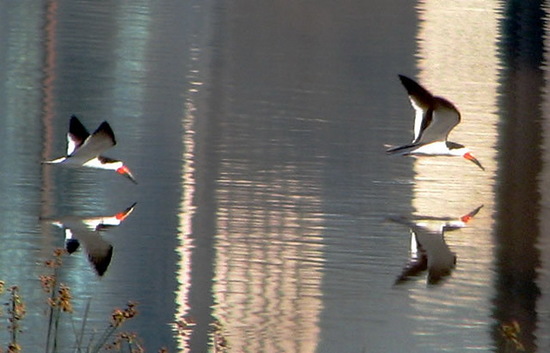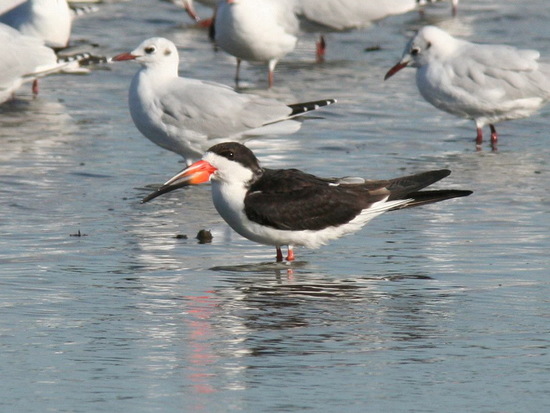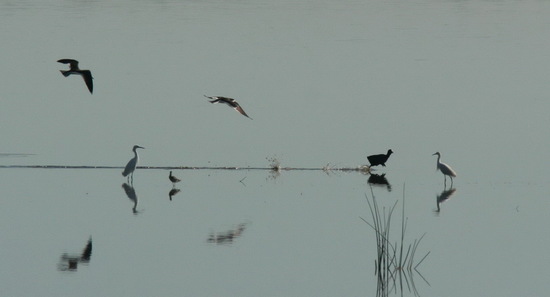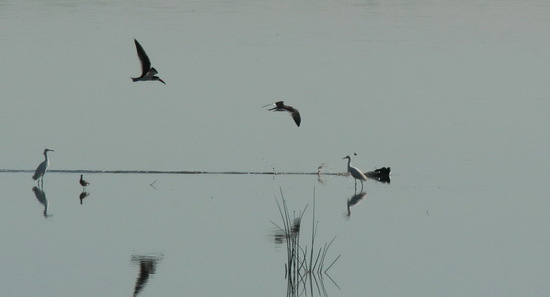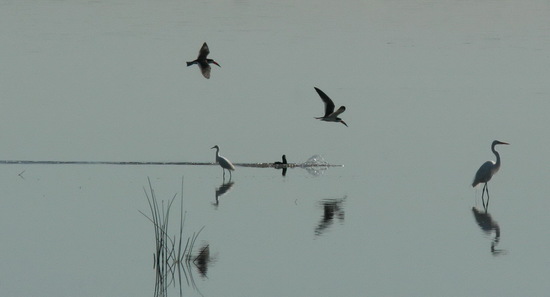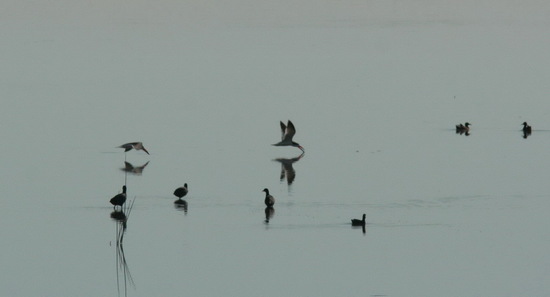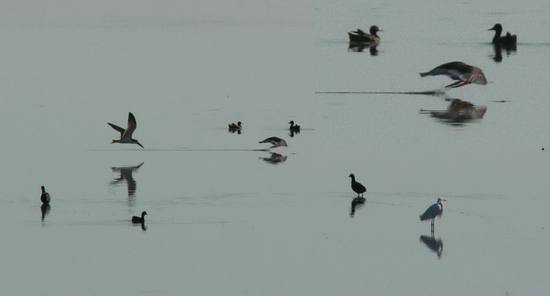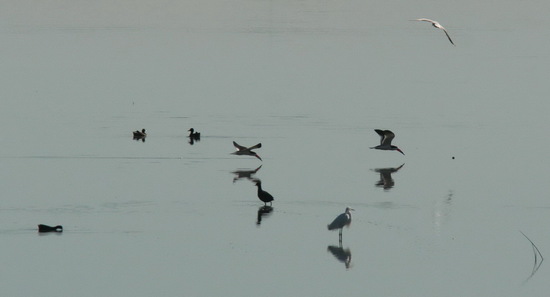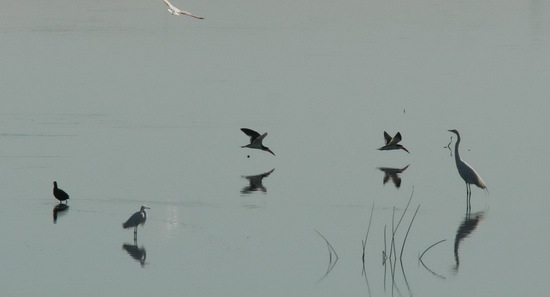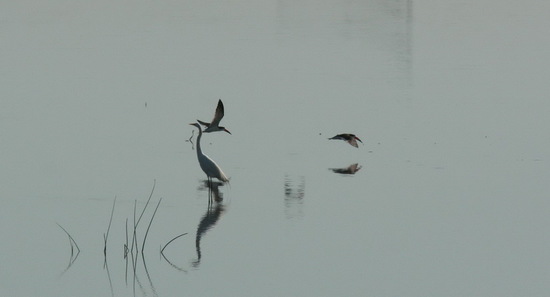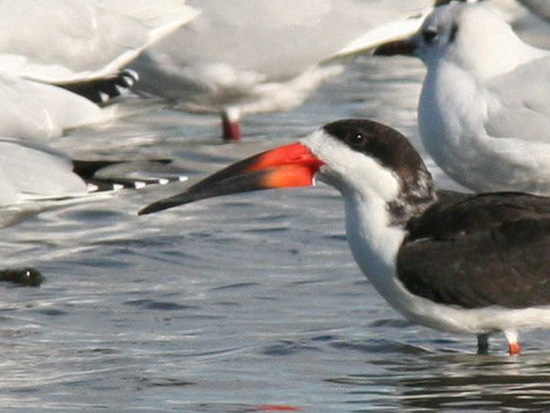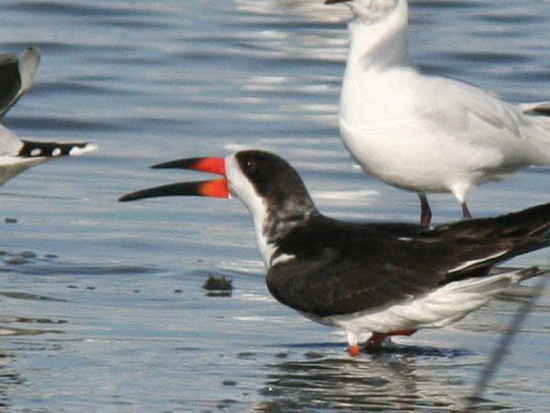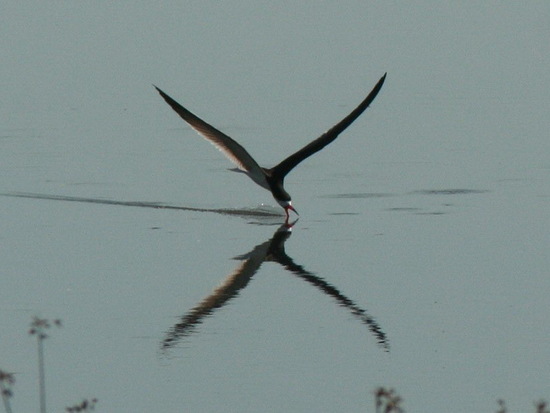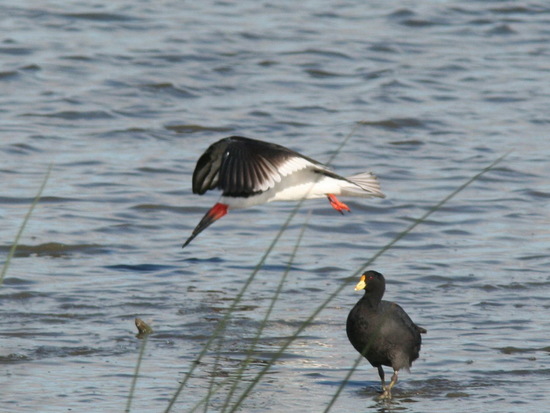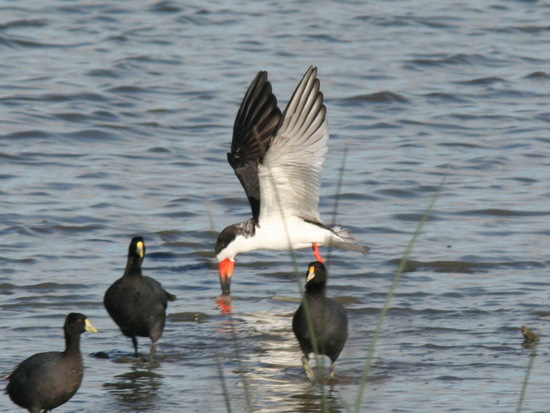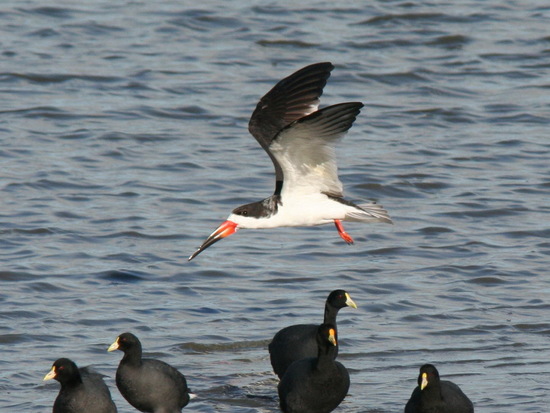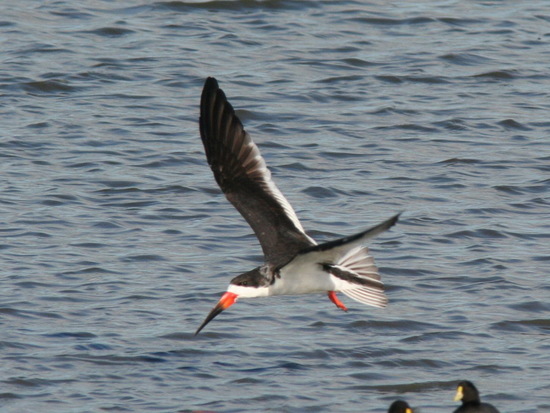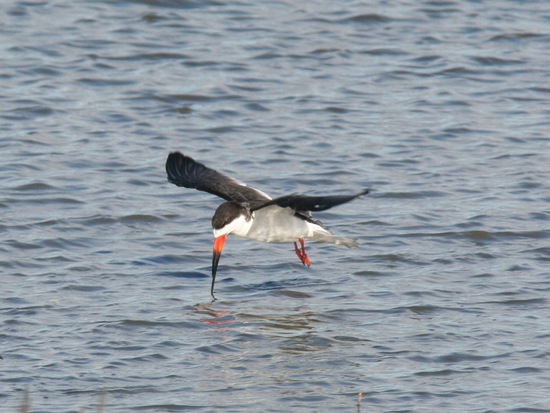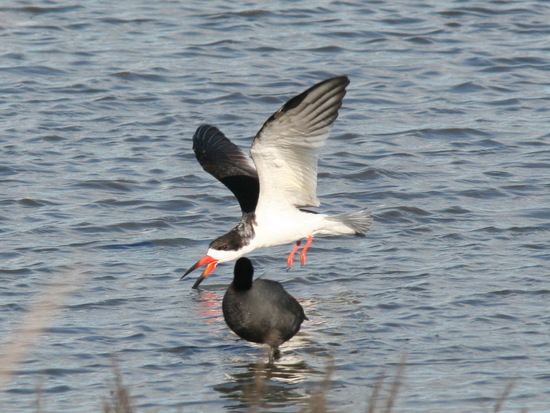Black skimmer - feeding
The Black Skimmer behaves gregariously. It is common to see the flock formed on the coast all looking at the same side and when time comes flying away in groups in search for food. They do it mostly at night. They feed on small fish and crustaceans in shallow and calm salt waters, lagoons and rivers.
Here it is not a frequent visitor.
Here it is not a frequent visitor.
The black skimmer looks for food on the wing. It flies straight with its head bent downwards and its bill open. Its lower part, partially submerged in the water and the upper one, clear of the water. The wings never extend below the horizontal to avoid getting wet. A "strenuous" position which demands more energy.
On hitting the prey the skimmer snaps the bill shut, doubles the head down and backwards to grasp the prey and swallow it. This sequence of movements requires coordination, maneuvrability and precision besides very strong neck muscles to absorb the impact force which prevents the neck from breaking
On hitting the prey the skimmer snaps the bill shut, doubles the head down and backwards to grasp the prey and swallow it. This sequence of movements requires coordination, maneuvrability and precision besides very strong neck muscles to absorb the impact force which prevents the neck from breaking
In one of the flights the skimmer bent the head back and downwards but unluckily we could not see whether it caught a prey.
The bill is very striking. It is the only bird whose lower mandible is longer than the upper one. Slightly decurved bill, red in its proximal part and black to the tip. Right: The lower mandible is flattened laterally. By dipping it this bird skims the water surface which gives the name to the bird and the technique. The lower mandible fits in a groove of the upper mandible. This is broad at the base and gets thinner to the tip.
The horny covering of the bill grows continuously, especially, the lower mandible. Vital adaptation for the black skimmer since it regenerates the wear caused by water friction o fractures. Keeping this extra mandible some centimeters under water broadens the feeding depth, but at the same time it entails the risk of bumping into submerged objects.
A reinforced jaw joint and an enlarged muscle mass are crucial to keeping the mandible stable.
A reinforced jaw joint and an enlarged muscle mass are crucial to keeping the mandible stable.
It is believed that this technique is tactile and not visual on the grounds that the lower mandible has a good supply of nerve endings which detect prey items. There are diverging opinions on whether the skimmer sees and then skims or skims indiscriminately. It is not yet clear what role vision plays in the search for food. Recent reasearch has shown that the topography of the visual field of the Black Skimmer does not coincide with the tactile foragers´. Unlike these, the bill tip falls within the binocular region both when closed or open when skimming. In this way the skimmer can control the positioning of its bill with respect to the water surface and identify the prey once it has been taken from the water. This result explains the other technique used by the skimmer to get food. It consists of stabbing its bill into the water to catch the prey. This may not be so glamorous a sight as the one explained above, but it is a feasible alternative.
This skimmer was exploring the coast in search for food though not skim-feeding. Flying low, manouvering airborne if something called its attention or landing if necessary.


